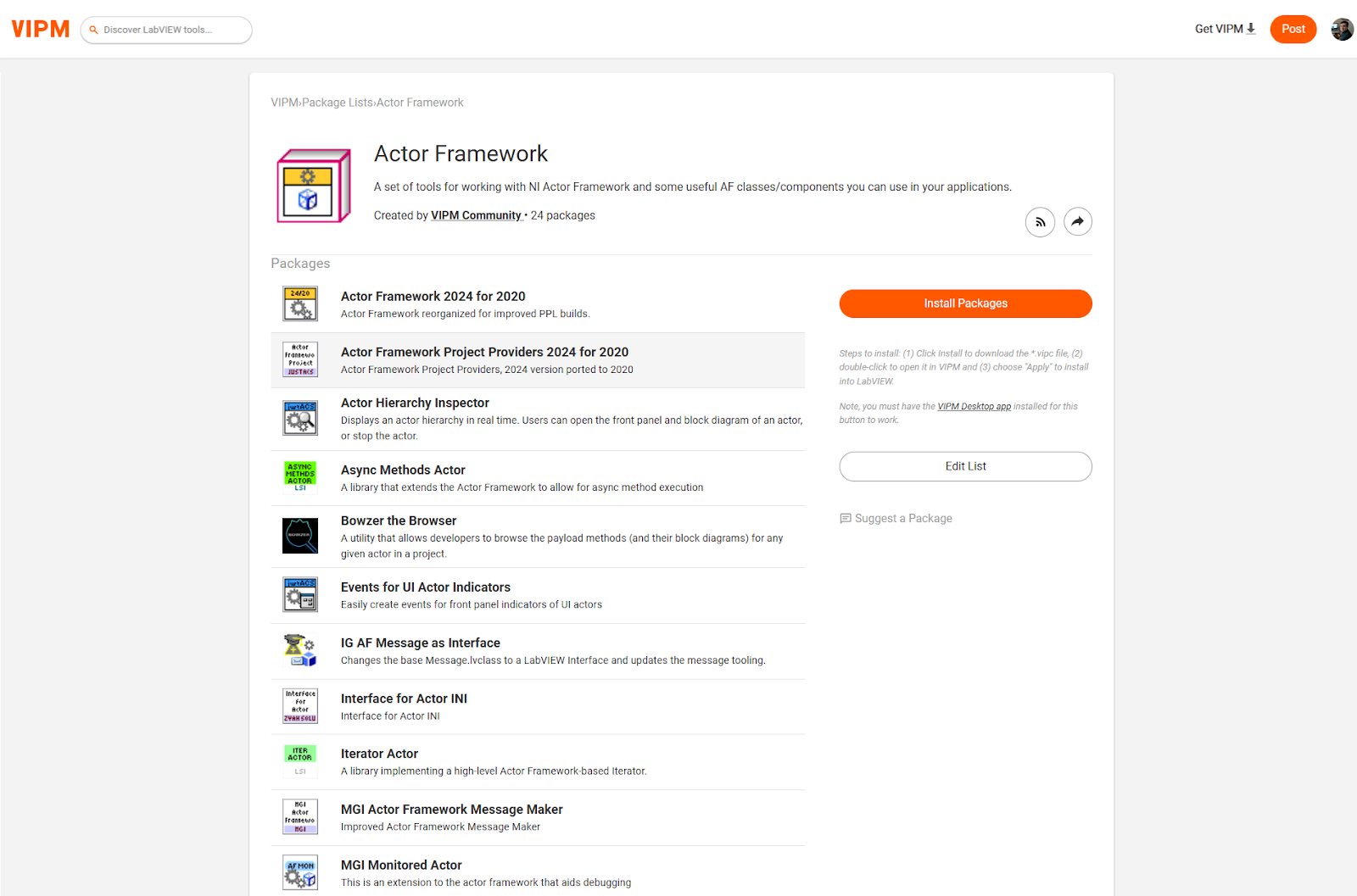Getting the Most Out of VI Package Manager (VIPM)
Modern software engineering is built on the principle of code reuse. Rather than writing every function from scratch, successful developers leverage existing libraries, frameworks, and components to build robust applications efficiently. This approach reduces development time, minimises bugs through battle-tested code, and allows teams to focus on solving unique problems rather than reimplementing common solutions. In the LabVIEW environment, this principle is just as important, and this is where the VI Package Manager (VIPM) proves invaluable.
Why Code Reuse Matters in LabVIEW
LabVIEW projects can quickly become unwieldy without proper code organisation. Common tasks like data logging, configuration management, or instrument communication appear in project after project. Rather than reinventing these wheels, successful LabVIEW developers build libraries of reusable components that can be shared across projects and teams.
The challenge has always been distribution. Traditional approaches involve copying VIs between projects or maintaining shared network drives, but these methods become problematic as teams grow and projects multiply. Version control becomes a nightmare, and keeping track of which project uses which version of a library is nearly impossible.
VIPM: The Community Solution
VIPM emerged as the community's answer to these distribution challenges. Think of it as a cross between a library catalogue and a software installer, designed specifically for LabVIEW code. Through VIPM.io, developers can search for packages that address specific problems, from simple utility functions to complete measurement frameworks.
Individual developers can upload their own packages to VIPM.io for the benefit of all LabVIEW developers. This creates a thriving ecosystem where solutions developed for one project can help solve similar problems across the entire community. The real beauty of VIPM lies in its integration with the broader LabVIEW ecosystem. Through VIPM.io, many packages link directly to open source GitHub repositories, allowing you to review the source code before installation. If you spot a bug or want to suggest an improvement, you can contribute directly to the package through GitHub or make suggestions directly on the VIPM.io package page. This creates a virtuous cycle where the entire community benefits from individual contributions.

Getting Help When You Need It
The VIPM community extends beyond just sharing code. When you encounter issues or have questions about package development, two excellent resources are available. The community forums at https://forums.vipm.io/ provide a searchable archive of discussions covering everything from basic package creation to advanced repository management. For more immediate help, the VIPM Discord server (https://discord.gg/8G3MCDCF) offers real-time chat with experienced developers who are usually happy to share their knowledge.
These community resources prove particularly valuable when you're starting out with package development. The collective experience of the community helps newcomers avoid common pitfalls and adopt best practices from the beginning.
Recent Improvements Make VIPM More Accessible
Since 2023, VIPM LabVIEW Edition has included many features that were previously restricted to the Pro version. The most significant addition is the ability to create VIPC (VI Package Configuration) files. These files act as snapshots of all the packages used in a particular project, ensuring that team members can recreate identical development environments.
VIPC files solve a common problem: project handovers. When you need to work on a colleague's project or return to your own work after months away, applying the VIPC file automatically installs all the required packages at the correct versions. This eliminates the frustration of missing dependencies and version mismatches.

Private Repositories for Commercial Development
Whilst the public VIPM community is excellent for open source work, commercial development often requires keeping certain libraries private. VIPM Pro addresses this need with private repositories that can be hosted on your own network or cloud infrastructure.
Private repositories work just like the public ones, but with access restricted to your organisation. This means you can build internal libraries of commonly used code, share them between projects, and maintain proper version control without exposing proprietary algorithms or customer-specific implementations.
Setting up a private repository involves creating a shared network location and configuring team members' VIPM installations to subscribe to it. The process is straightforward, and the benefits become apparent quickly. Development teams report significant time savings once they establish good internal package libraries.

Making the Most of Package Management
Whether you're using public packages or building private ones, success with VIPM depends on adopting good practices. Start small by packaging commonly used utility functions, then gradually build more comprehensive libraries. Document your packages properly, including clear descriptions and usage examples.
For team environments, establish naming conventions and version numbering schemes early. Consider who will maintain packages and how updates will be distributed. These organisational aspects are just as important as the technical implementation.
The key insight is that VIPM isn't just about installing other people's code. It's about creating a sustainable approach to code reuse that scales with your projects and teams. Whether you're working alone or as part of a large organisation, the principles remain the same: build once, use many times, and share the benefits.
VIPM has become a practical tool for managing code reuse in LabVIEW projects. By embracing both its public and private capabilities, developers can focus more time on solving unique problems rather than rebuilding common solutions. In an environment where project complexity continues to grow, this shift from rebuilding to reusing becomes increasingly valuable.

Enjoyed the article? Leave us a comment